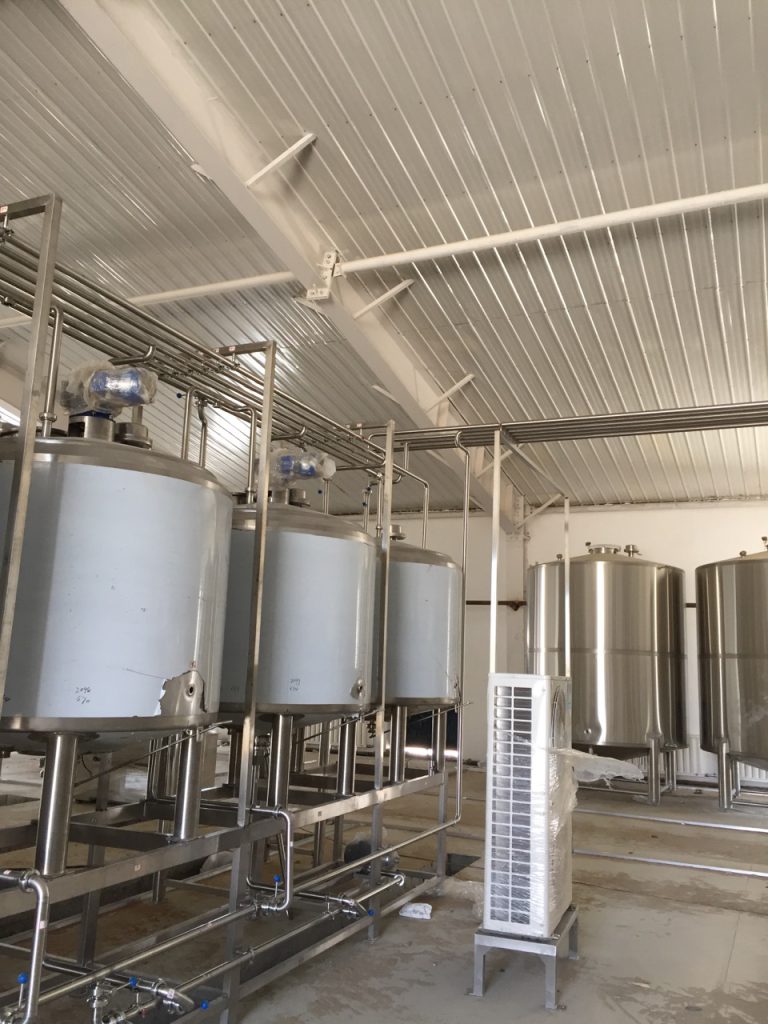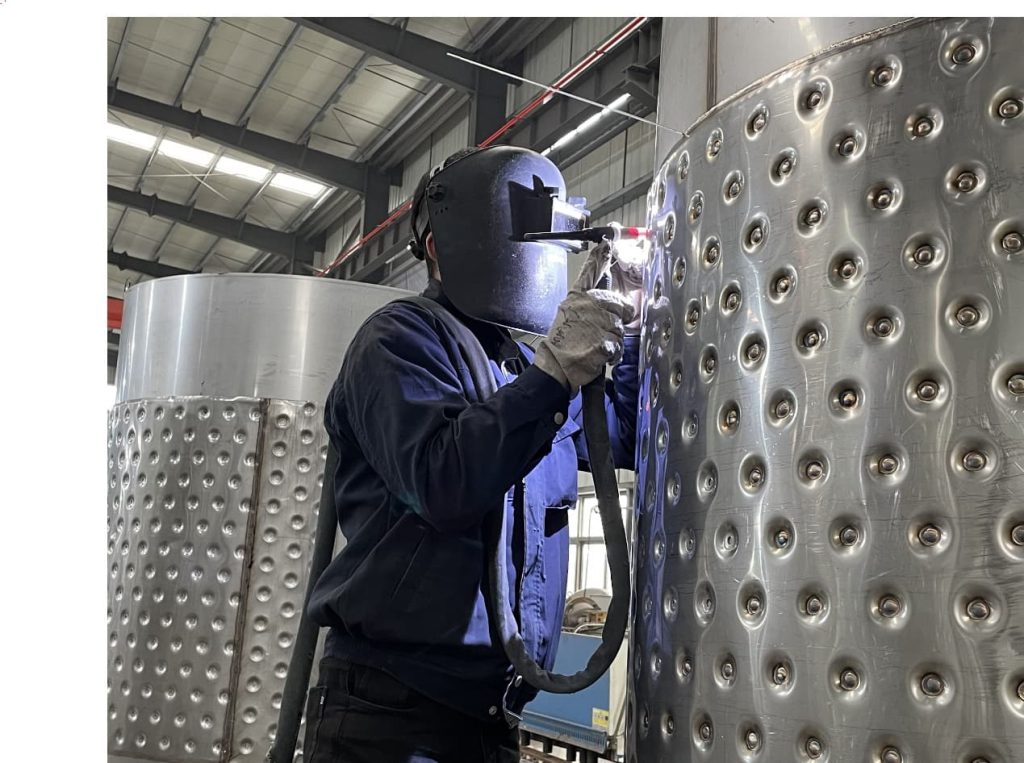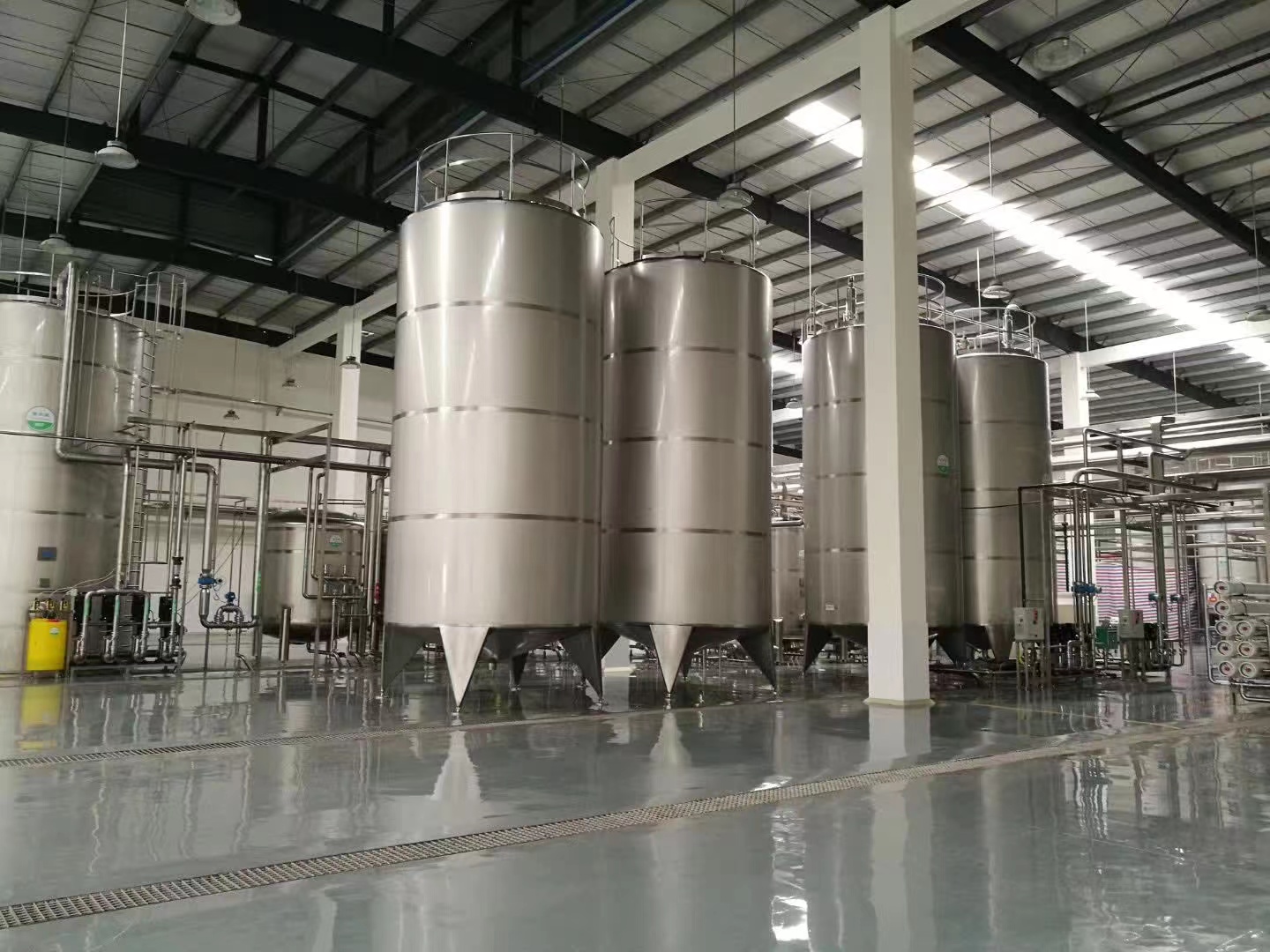Einführung

Edelstahl-Milchtanks spielen in modernen Milchbetrieben eine zentrale Rolle und bieten erhebliche Vorteile gegenüber herkömmlichen Lagermethoden. Ihre Langlebigkeit, Hygienestandards und Betriebseffizienz machen sie unverzichtbar, um die Milchqualität sicherzustellen und die Arbeitsabläufe in der Milchverarbeitung zu optimieren.
Vorteile von Edelstahl Bulk Milk Tanks
Haltbarkeit und Langlebigkeit
Stainless steel tanks are renowned for their exceptional durability. They withstand rigorous conditions, including temperature variations and frequent cleaning processes, without compromising structural integrity. This durability translates into a longer lifespan compared to alternative materials like plastic or concrete. Stainless steel’s resistance to corrosion ensures that these tanks maintain their robustness over years of use, safeguarding milk quality and reducing maintenance costs.
Material Strength
Stainless steel’s strength lies in its composition, typically a blend of iron, carbon, chromium, and nickel. This alloy combination provides high tensile strength and resistance to impact, making it ideal for withstanding the pressures of dairy operations.
Resistance to Corrosion
One of the standout features of stainless steel is its resistance to corrosion. This property is crucial in dairy settings where exposure to acidic milk and cleaning chemicals could potentially degrade other materials over time. Stainless steel’s inert nature ensures that it does not react with milk or cleaning agents, preserving the purity and taste of the milk stored within.
Hygiene and Milk Quality
Maintaining impeccable hygiene standards is paramount in dairy farming to prevent contamination and ensure milk safety. Stainless steel’s smooth, non-porous surface inhibits bacterial growth and facilitates thorough cleaning. Unlike materials such as plastic, which can develop scratches and harbor bacteria, stainless steel can be cleaned more effectively, reducing the risk of milk spoilage and maintaining high-quality standards throughout the storage process.
Non-Reactive Material
The non-reactive nature of stainless steel is a critical advantage in dairy applications. It prevents any interaction between the tank material and the milk, preserving the natural taste and quality of the dairy products. This feature is particularly important in the production of premium dairy products where taste consistency is paramount.
Einfache Reinigung
Cleaning stainless steel tanks is straightforward due to their smooth surface finish and resistance to stains. Dairy farmers can use a variety of cleaning agents and methods without fear of damaging the tank’s surface or compromising hygiene. Effective cleaning routines not only extend the life of the tank but also ensure compliance with strict health and safety regulations governing dairy operations.
Efficiency in Milk Storage
Stainless steel bulk milk tanks offer efficiency advantages that streamline dairy operations and enhance overall productivity. These tanks are available in various capacities and sizes, accommodating the specific needs of different dairy farms, from small-scale producers to large commercial operations. Their design ensures optimal temperature control, crucial for preserving milk freshness and quality from the point of storage to processing.
Capacity and Size Options
Dairy farmers can choose from a range of stainless steel tank sizes based on their production volume and space availability. This flexibility allows for efficient milk storage without the need for multiple smaller containers, thereby reducing logistical complexities and improving operational efficiency.
Temperaturregelung
Stainless steel’s thermal properties contribute to effective temperature control within the tanks. This capability is essential for maintaining the cold chain integrity of milk, ensuring that it remains at the optimal temperature throughout storage and transportation. Consistent temperature management minimizes the risk of bacterial growth and extends the shelf life of dairy products.
Environmental Impact of Edelstahltanks
Sustainability and Eco-Friendliness
The sustainability of stainless steel bulk milk tanks extends beyond their durability and longevity. Stainless steel is fully recyclable, contributing to environmental conservation by reducing waste and minimizing the carbon footprint associated with dairy operations. Compared to disposable containers or tanks made from non-recyclable materials like plastic, stainless steel offers a sustainable solution that aligns with modern environmental standards.
Long-Term Sustainability
Investing in stainless steel tanks represents a long-term commitment to sustainability. These tanks can be reused indefinitely with proper maintenance, reducing the need for frequent replacements and minimizing environmental impact associated with manufacturing and disposal of alternative materials.
Energieeffizienz
Stainless steel’s thermal conductivity properties contribute to energy efficiency in dairy operations. The tanks require less energy to maintain desired temperatures, resulting in lower operational costs and reduced greenhouse gas emissions. This energy efficiency not only benefits the environment but also enhances the economic viability of dairy farming by lowering overhead expenses.
Economic Advantages of Using Bulk Milk Tanks
Kosteneffizienz
While stainless steel bulk milk tanks may have a higher initial investment compared to alternatives like plastic or concrete, their long-term cost-effectiveness is undeniable. The durability and low maintenance requirements of stainless steel translate into significant savings over the lifespan of the tanks. Dairy farmers can achieve a higher return on investment (ROI) by reducing repair and replacement costs associated with less durable materials.
Langfristige Kosteneinsparungen
The total cost of ownership analysis often favors stainless steel tanks due to their extended lifespan and minimal maintenance needs. Dairy operations benefit from reduced downtime and operational disruptions, resulting in higher productivity and profitability over time.
ROI Calculation
Calculating the ROI of stainless steel tanks involves assessing initial capital expenditure, ongoing maintenance costs, and potential savings from improved milk quality and operational efficiency. Despite the higher upfront costs, the comprehensive economic benefits justify the initial investment for dairy farmers looking to optimize their production processes.
Comparing Stainless Steel with Other Materials
Stainless Steel vs. Plastic Tanks
The choice between stainless steel and plastic tanks hinges on several factors, including durability, hygiene, and long-term cost considerations. While plastic tanks may be initially cheaper, they often require frequent replacements due to wear and tear, resulting in higher overall costs and environmental impact.
Durability and Lifespan Comparison
Stainless steel outperforms plastic in terms of durability and lifespan. Plastic tanks are prone to cracking, UV degradation, and bacterial contamination over time, necessitating more frequent replacements and compromising milk quality assurance.
Hygiene and Cleanliness Differences
Stainless steel’s smooth surface is easier to clean and disinfect compared to plastic, which can develop scratches and harbor bacteria. Hygiene standards are crucial in dairy farming to prevent cross-contamination and ensure milk safety throughout the production and storage process.
Stainless Steel vs. Concrete Tanks
Concrete tanks have traditionally been used in dairy farming for their durability and thermal insulation properties. However, stainless steel offers distinct advantages in terms of maintenance, flexibility, and operational efficiency.
Maintenance and Repair
Stainless steel tanks require less maintenance compared to concrete tanks, which may develop cracks and leaks over time. Repairing concrete tanks can be costly and disruptive to dairy operations, whereas stainless steel tanks offer easier maintenance and longevity.
Flexibility in Design
Stainless steel tanks can be customized to fit various dairy farm layouts and production requirements. Their modular design and flexible installation options make them adaptable to evolving operational needs, whereas concrete tanks are more rigid and less versatile in terms of design modifications.
Fallstudien und Anwendungen aus der Praxis
Implementations in Large-Scale Dairy Farms
Stainless steel bulk milk tanks have revolutionized dairy operations in large-scale farms worldwide, enhancing efficiency and milk quality. Case studies demonstrate significant improvements in productivity and profitability following the adoption of stainless steel tanks.
Innovations and Improvements
Technological advancements in stainless steel tank design continue to drive innovation in dairy farming. Improved insulation, automated temperature control systems, and integrated monitoring capabilities have further enhanced the efficiency and reliability of these tanks in modern dairy operations.
Vergleich von Bulk Milk Tank Materialien
| Besonderheit | Stainless Steel Bulk Milk Tanks | Plastic Bulk Milk Tanks | Concrete Bulk Milk Tanks |
|---|---|---|---|
| Haltbarkeit | Hoch | Niedrig | Hoch |
| Hygiene | Exzellent | Average | Gut |
| Wartung | Niedrig | Hoch | Mäßig |
| Kosteneffizienz | Cost-effective | Costly | Initial cost high |
| Umweltauswirkungen | Sustainable | Non-sustainable | Non-sustainable |
Maintenance Tips for Stainless Steel Bulk Milk Tanks
Cleaning and Maintenance Best Practices

Proper cleaning and maintenance are essential to maximizing the lifespan and performance of stainless steel bulk milk tanks. Adopting effective cleaning protocols and regular inspections can prevent contamination, ensure regulatory compliance, and prolong the operational efficiency of the tanks.
Routine Inspections
Regular inspections of stainless steel tanks help identify potential issues such as leaks, corrosion spots, or mechanical failures. Prompt maintenance interventions can mitigate risks and prevent costly repairs or replacements.
Cleaning Agents and Techniques
Using recommended cleaning agents and techniques tailored to stainless steel ensures thorough sanitation without compromising tank integrity. Mild detergents, hot water sanitization, and automated cleaning systems are commonly used methods to maintain hygiene standards in dairy operations.
Abschluss
Edelstahl bulk milk tanks stand as the cornerstone of modern dairy farming, offering unmatched durability, hygiene, and operational efficiency. Their role in preserving milk quality, optimizing storage conditions, and reducing environmental impact underscores their value as indispensable assets in dairy operations worldwide. As technological advancements continue to improve tank design and functionality, stainless steel remains at the forefront of sustainable dairy production practices.
Häufig gestellte Fragen
Q: What are the primary advantages of using stainless steel bulk milk tanks?
A: Stainless steel tanks offer superior durability, hygiene standards, and operational efficiency compared to alternative materials like plastic or concrete.
Q: How do stainless steel tanks compare with other materials like plastic and concrete?
A: Stainless steel outperforms plastic and concrete in terms of durability, cleanliness, and long-term cost-effectiveness in dairy farming applications.
Q: Are there specific cleaning agents recommended for stainless steel tanks?
A: Mild detergents and hot water sanitization are commonly used for cleaning stainless steel tanks, ensuring thorough sanitation without compromising material integrity.
Q: What factors should dairy farmers consider when choosing a stainless steel tank size?
A: Dairy farmers should consider production volume, space availability, and operational needs when selecting the appropriate size of stainless steel bulk milk tanks.

